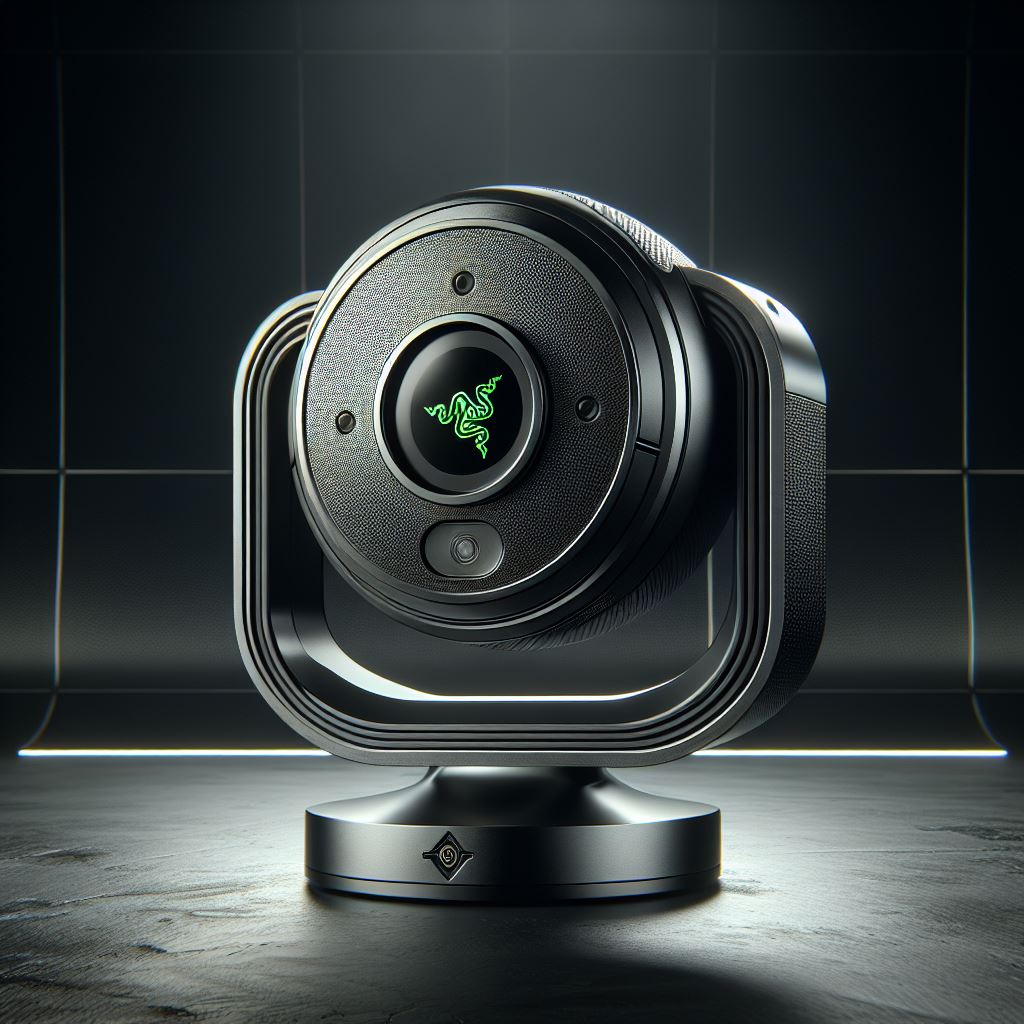Back to Computer Accessories: Webcam Main-page
Forget grainy, poorly lit webcam video. If you’re a content creator, streamer, or professional demanding the absolute best image quality possible from a webcam, the Razer Kiyo Pro Ultra makes a compelling case. Armed with one of the largest sensors ever seen in a webcam and an incredibly bright lens, it aims to deliver visuals that rival dedicated cameras. But does this premium, optics-focused webcam still shine brightest in 2025?
Why the Kiyo Pro Ultra Captures Stunning Images:
The magic lies in its core components, purpose-built for exceptional visuals:
- Massive 1/1.2″ Sony STARVIS 2 Sensor: This is the heart of the Kiyo Pro Ultra and its main differentiator. This enormous sensor (by webcam standards) captures vastly more light than competitors, resulting in phenomenal low-light performance, incredible detail, richer colors, and significantly less noise, even in dimly lit rooms.
- Ultra-Bright f/1.7 Aperture Lens: Paired with the large sensor is a custom lens with a remarkably wide f/1.7 aperture. This lets in even more light and enables a shallow depth of field, creating beautiful, natural background blur (bokeh) that makes you pop from your surroundings – no clunky software effects needed.
- Crisp 4K Detail: Capture your content in sharp 4K resolution at 30 frames per second, delivering incredible clarity perfect for high-quality recordings, streams, or professional calls where detail matters. HDR support further enhances image quality by balancing highlights and shadows in tricky lighting scenarios.
- Intelligent Focus & Exposure: AI-powered face tracking autofocus works quickly to keep you sharp, while auto-exposure helps maintain a balanced look even if lighting conditions change slightly.
Pro Features for Creators:
- Fine-Tuned Control via Razer Synapse: While it delivers great results automatically, dive into the Razer Synapse 3 software to unlock granular control over ISO, shutter speed (implied), exposure compensation, white balance, focus modes, digital zoom, and more, allowing you to dial in your perfect signature look.
- Integrated Privacy: A built-in physical privacy cover (lens cap style or shutter – verify specific mechanism) provides a simple way to ensure you’re offline when intended.
- Plug-and-Play (with Power): Connects via USB-C and requires a USB 3.0 port to handle the high-bandwidth 4K video stream effectively.
Key Specifications Overview
- Sensor: Sony STARVIS 2 CMOS (Massive 1/1.2″ format)
- Lens: Custom f/1.7 Aperture, Autofocus
- Resolution/Framerate: Up to 4K UHD @ 30fps (Supports lower resolutions like 1080p, potentially at 60fps)
- Features: HDR Support, AI Face Tracking AF/AE, Integrated Privacy Cover, Razer Synapse 3 Control.
- Connectivity: USB-C (Requires USB 3.0 Port)
- Microphone: NONE
- Compatibility: Windows 8 or higher (Check macOS compatibility status if needed)
- Approximate Cost (April 3, 2025): ~$299 USD
Pro-Level Webcam = Pro-Level Considerations (2025):
- Bring Your Own Mic (Mandatory): The Kiyo Pro Ultra does NOT have a built-in microphone. It is purely focused on delivering the best possible video, assuming you will use a dedicated USB or XLR microphone for professional-quality audio.
- 4K Video is Capped at 30fps: While the 4K image is stunningly detailed, it doesn’t offer the ultra-smooth 60fps motion at that resolution. If high-frame-rate 4K video is your absolute priority, this isn’t the camera for you (consider the Elgato Facecam Pro).
- Significant Investment: At around $300, this is a premium webcam targeting users who see tangible value in its superior optical hardware.
- Requires a USB 3.0 Port: Make sure your computer has a free USB 3.0 (or faster) port to power the camera and handle the 4K data stream correctly.
- Software for Full Control: Accessing manual settings and fine-tuning relies on installing Razer Synapse 3.
The Pinnacle of Webcam Imaging? Comparisons (2025):
- vs. Elgato Facecam Pro: The Kiyo Pro Ultra’s most direct rival in the premium space. Choose Kiyo Pro Ultra for: its larger sensor and brighter f/1.7 lens (potentially better low-light/bokeh). Choose Facecam Pro for: true 4K/60fps video (if high frame rate is critical). Both lack mics and require USB 3.0 and software control.
- vs. AI Gimbal Webcams (Insta360 Link, Obsbot Tiny 2): These offer innovative AI tracking and physical camera movement, which the Kiyo Pro Ultra lacks. However, the Kiyo Pro Ultra’s significantly larger sensor and brighter lens generally provide superior raw image quality, especially regarding low light and natural bokeh.
- vs. Standard 4K/1080p Webcams (Logitech Brio/Brio 500): More affordable options that offer good quality (Brio 4K/30fps, Brio 500 1080p/30fps with AI features), often include mics, but simply cannot match the Kiyo Pro Ultra’s light-gathering ability, low-light performance, or natural depth-of-field due to their much smaller sensors and less bright lenses.
The Verdict for Visual Purists (2025):
The Razer Kiyo Pro Ultra remains an exceptional choice in 2025 for:
- Content creators, streamers, and professionals who prioritize maximum webcam image quality, particularly in low-light conditions, and desire natural background blur (bokeh).
- Users who want video quality that gets as close as possible to a dedicated DSLR/mirrorless camera without the added complexity.
- Individuals who already use or plan to invest in a dedicated microphone for high-quality audio.
- Anyone willing to invest premium dollars for best-in-class webcam optics.
You should probably choose a different webcam if:
- You absolutely need 4K video at 60 frames per second.
- You require a built-in microphone.
- Your budget is below the ~$300 premium price point.
- You want AI-powered camera tracking/movement features.
- You only have USB 2.0 ports available.
If your goal is to achieve the most visually stunning, cinematic look possible directly from a webcam, especially when lighting isn’t perfect, the Razer Kiyo Pro Ultra’s massive sensor and ultra-bright lens make it a truly standout performer, justifying its “Ultra” name and premium price for serious visual communicators


